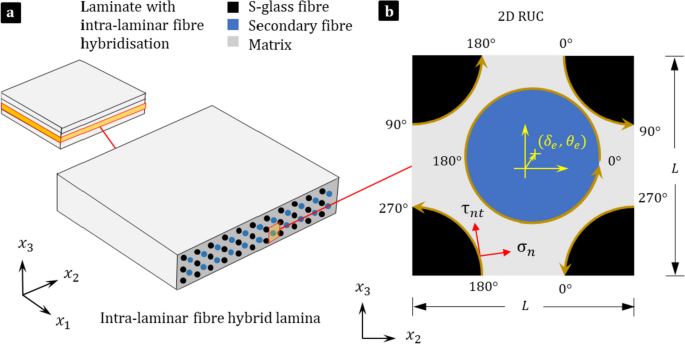On the Micro-Stress Fields in Fibre-Hybrid Polymer Composite Laminae with Periodic Microstructure Under Transverse Tension and Transverse Shear Loading
Abstract
This paper investigates the effect of intra-laminar fibre hybridisation, i.e., primary and secondary fibres within a matrix, on the homogenised properties and micro-stress fields in uni-directional polymer composite laminae. The study is focused on S-glass/epoxy laminae which are hybridised with secondary fibres (e.g., polypropylene). Two-dimensional repeating unit cells (2D RUCs) with periodic microstructures are developed to conduct the micro-mechanical analyses under transverse tensile and transverse shear loading conditions. Uni-directional fibre-hybrid S-glass/epoxy laminae with different secondary fibres are studied by varying (a) the periodic microstructure and (b) the material properties of the constituent fibres to assess the effect of such geometric and material variations on the homogenised elastic lamina properties and intra-lamina micro-stress fields. The results show that intra-laminar fibre hybridisation significantly affects the elastic lamina properties and micro-stress fields. Notably, the presence of the secondary fibres significantly increases or reduces the stress fields in the matrix and at the fibre-matrix interfaces (i.e. normal and shears stress components)–depending on the microstructure and the stiffness of the secondary fibres–which could be explored to manipulate the damage modes and thus energy dissipation mechanisms.


 求助内容:
求助内容: 应助结果提醒方式:
应助结果提醒方式:


